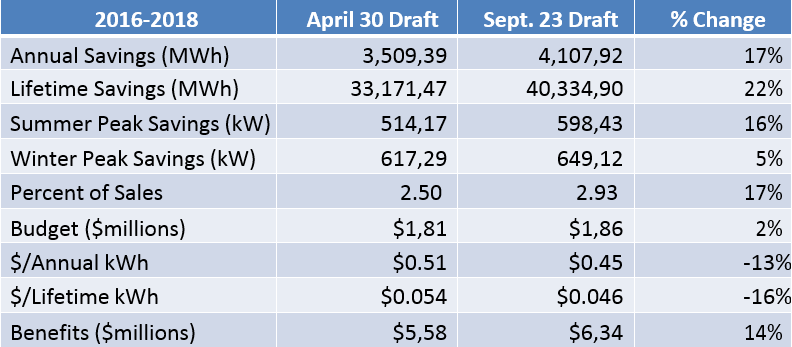By Natalie Hildt Treat | Mon, October 26, 15
The joint energy efficiency program administrators (PAs) and the stakeholder Energy Efficiency Advisory Council (EEAC) have delivered another landmark statewide plan for Massachusetts. The final plan is being sent to the Department of Public Utilities (DPU) for approval on October 30, passed by the Council with overwhelming support.
While some details remain to be worked out in program implementation, it is clear that the version going for regulatory approval is a marked improvement from the April 30 draft plan, and is poised to deliver $8 billion in benefits to the state. The proposed plans would deliver nationally historic savings levels — 2.93% of forecasted electric sales and 1.24% of forecasted gas sales statewide — keeping the Commonwealth at the top of the pack.
At a recent Council meeting, the electric and gas utilities and the Cape Light Compact highlighted important developments in the plan, including:
- New energy demand reduction efforts;
- A continued commitment to innovation and technology for both C&I and residential programs; and
- A new residential contractor engagement strategy to be led by the Department of Energy Resources
Matt Nelson, Supervisor of Regulatory and Planning at Eversource told the Council, “You have the support of the PAs (with these goals), but we are really standing on our toes here. This is not a slam dunk.” According to the PAs, the latest version of the plan represents a 20% increasing in savings, with only a 2% impact on budget.
The Baker Administration seems pleased with the direction of the plans, particularly given the focus on cost savings as well as integration of efficiency with other energy solutions. “Better managing peaks through energy efficiency and load management is a priority of this administration,” said Judith Judson, Commissioner of the Department of Energy Resources. Judson noted that the program administrators will implement enhanced demand management programs together with grid modernization and energy storage efforts.
The full draft plan (all 1,676 pages), consultant analysis and public comments can be found on the EEAC website under the Meeting Materials. After being recently named top in the nation five years running in ACEEE’s State Scorecard, it’s encouraging to see the Commonwealth solidifying its commitment to cost-effective efficiency as a first order resource – something that will continue to be an important part of the state’s economy and energy matrix.
